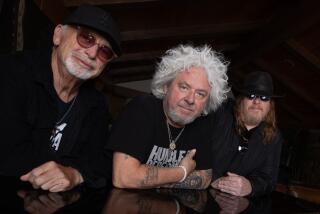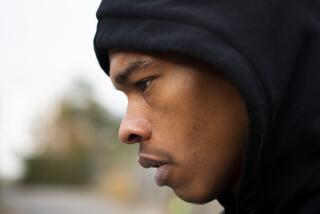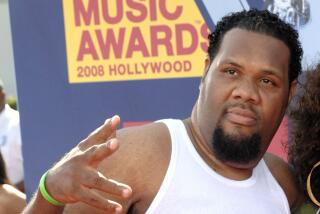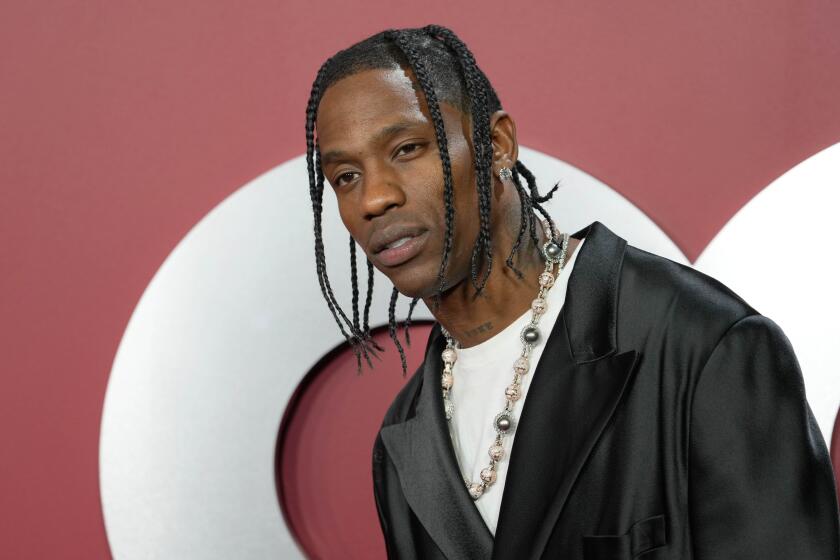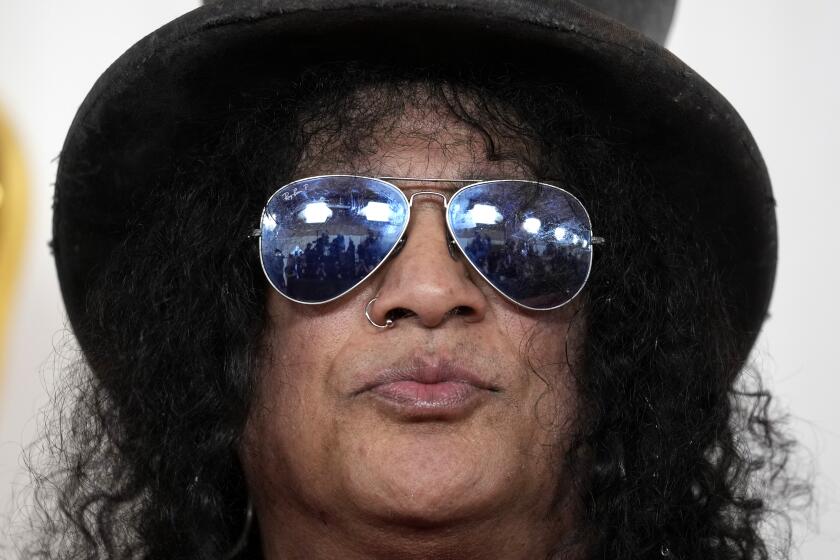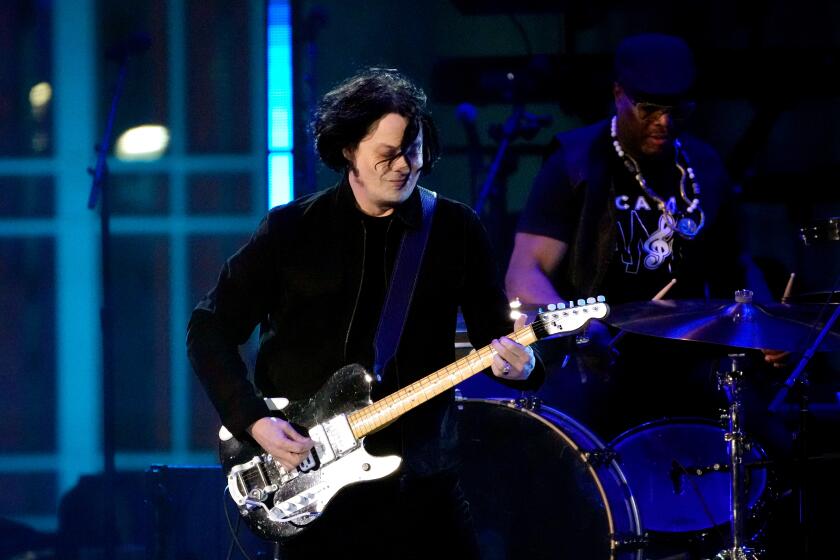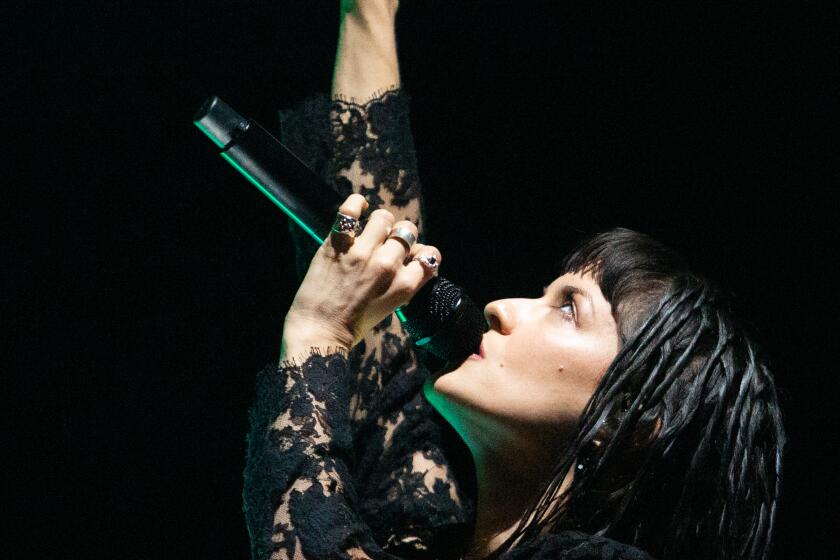Annual Jazz Party to Swing in a Whole Weekend of Jams
Before he died in 1989, Bill Muchnic, an amateur trumpeter and longtime jazz fan, founded the San Diego Jazz Party, a three-day jam session featuring 20 or so top traditional jazz players.
Muchnic also got his wife, Beverly, hooked on the music, and she has taken over the reins. This year’s party, the fourth, will be held today, Saturday and Sunday at the San Diego Marriott Hotel downtown, and is sold out.
Muchnic has sold all 500 passes for this weekend at $135 apiece.
“Twenty-eight years ago, Dick Gibson started the first jazz party in Denver, and Bill had gone to all but the first one,” Beverly Muchnic said, recalling how her husband became interested in the concept. Following Gibson’s lead, jazz fanatics in many other cities started parties of their own, and today there are more than 50.
“We used to go to all of these parties, and Bill used to write these people critiques of their parties,” Muchnic said. “I finally said, ‘You’re so critical, why don’t you start your own?’ ”
Her husband did just that, creating a distinct party with his own choices of musicians and suggestions of material.
His wife selects the musicians now. In addition to a cast of San Diego Jazz Party regulars established by her husband, she has lured several new faces for this year’s party: guitarist Marty Gross, trumpeter Joe Wilder, drummer Oliver Jackson, pianist Gerald Wiggins, vocalists Don and Alicia Cunningham and vibraphonist Peter Appleyard.
Muchnic has also worked out the schedule that puts the musicians together in assorted combinations for each of the party’s many sets. She made sure that guitarist Howard Alden and clarinetist Kenny Davern, who recorded together recently, will play a set together, and that Davern will also get a chance to play with his longtime collaborator Bob Wilber, the soprano saxophonist.
It’s no coincidence that the jazz parties blossomed in the 1970s and 1980s. During those years, many small jazz clubs folded after having served as a primary outlet for traditional jazz for years. With light jazz pop and latter day be-bop dominating the clubs that remain, and with other forms of music prevailing on the radio, the jazz parties represent survival for jazz musicians who favor the pre-bop jazz of the 1920s, 1930s and 1940s, the stuff of the Swing era.
“Most of what you hear these days is rock ‘n’ roll and synthesizers,” lamented saxophonist Flip Phillips, a star of big band leader Woody Herman’s First Herd in the mid-1940s. At 75, Philips is one of the party’s senior participants.
Said Davern, “I still like to play the clubs because the music was really reared and spawned there, and you sort of miss the ambience. But the parties are great, and they are the bulwark of what we do these days.
“There are no more clubs. I dislike New York City to such a degree that I don’t enjoy the clubs there. They are so small, they have to have several short shows a night, so there is not much room for improvising. There’s no looseness, people can’t get up and dance, they can’t talk. Music shouldn’t be so sacrosanct that everyone should be sitting there with bated breath.”
Davern, who began his career playing clarinet with Pee Wee Erwin and Ruby Braff in the early 1960s, switched to soprano sax in the late ‘60s and returned to clarinet in 1978, attributes the demise of the club scene across the United States to several factors.
“It probably has to do with more stringent drunk-driving laws, changes in habits such as cigarettes and drinking, and changes in musical tastes. Also the advent of the deejay, who’s like a cancerous pox. They spring up on boats, in clubs. Wherever there was live music once, it’s been conveniently displaced by one of these people, who make more in one night than an entire trio who actually played the music live might make in a week.”
Davern, who lives in Manasquan, N.J., plays about 10 jazz parties a year. Although his appearances are limited, his recording career thrives.
His last solo album was the 1988 “I’ll See You In My Dreams” for the Musicmaster label. The 1990 album “Summit Reunion” on the Chiaroscuro label re-united Davern with Wilber for a reprisal of the group they led in the mid-1970s.
Davern, 56, said his long-lasting love affair with the clarinet, which fell from favor during the big band days when other horns could be heard more easily, has to do with the instrument’s versatility.
“After I switched to soprano, I played a little clarinet with the Summit. One day I was playing and I began to see the expansiveness of the instrument, and I said, ‘What am I doing? This has much more potential than I anticipated.’ The longer I was away from it, the heart began to grow fonder.
“It’s got an emotional range, a range that is very satisfying. My sound is my sound, this is one of the perks. I just happen to have been born with it, and people could tell my sound even when I was 19.”
Phillips, too, has a sound of his own. On tenor sax and bass clarinet, his playing continues to mature. He plays with the speed, dexterity and invention of a young buck on his last recording, the 1988 Concord album “A Real Swinger.”
And he doesn’t agree with fans and critics who try to separate the jazz he grew up with from the be-bop, cool and progressive jazz that came later.
“I play in the be-bop vein once in a while. The title of my last album was ‘A Real Swinger.’ Some call it be-bop, jazz, blues. I call it swing. If it swings, it’s good.”
Along with Phillips, Davern and the newcomers, this year’s Jazz Party will include guitarists Howard Alden and Marty Gross; bassists John Clayton, Jay Leonhart and Milt Hinton; drummers Jackie Williams and Butch Miles; vocalists Don and Alicia Cunningham; reedmen Wilber, Ken Peplowski, Marshall Royal, Plas Johnson and Dick Johnson; trumpeters Warren Vache, Joe Wilder and Ed Polcer; trombonists Dan Barrett, George Masso and Al Grey; and pianists Paul Smith and Dick Hyman.
More to Read
The biggest entertainment stories
Get our big stories about Hollywood, film, television, music, arts, culture and more right in your inbox as soon as they publish.
You may occasionally receive promotional content from the Los Angeles Times.
